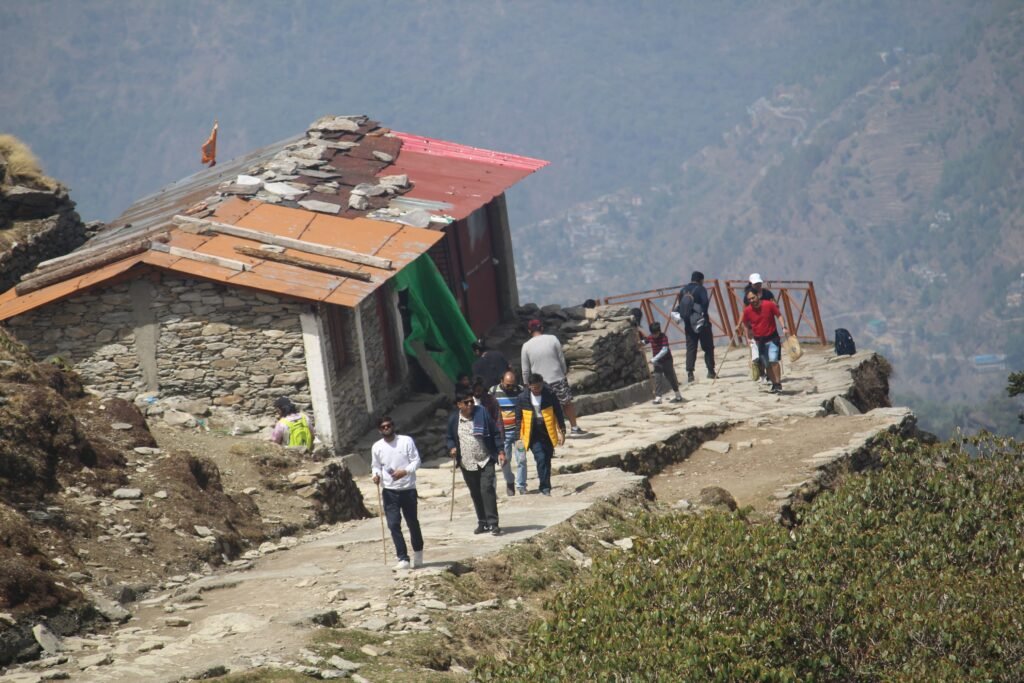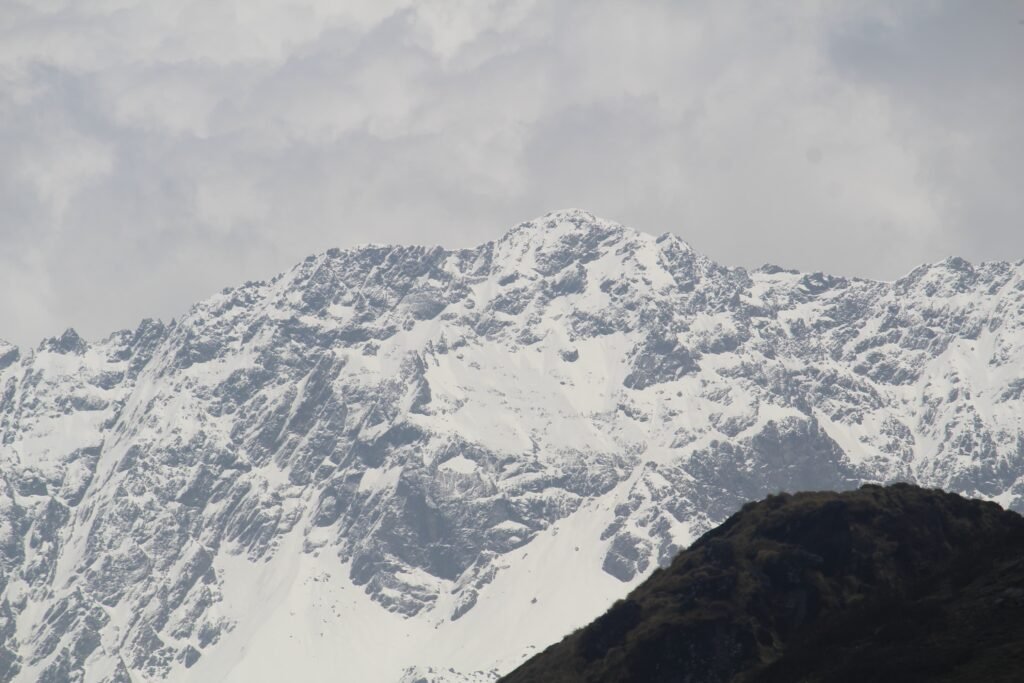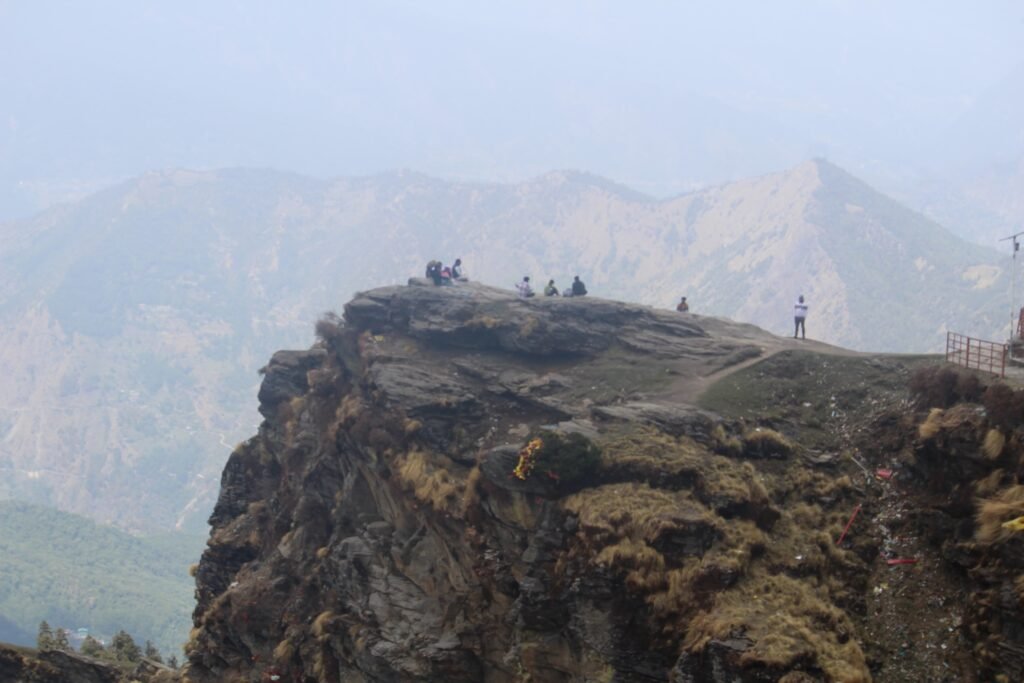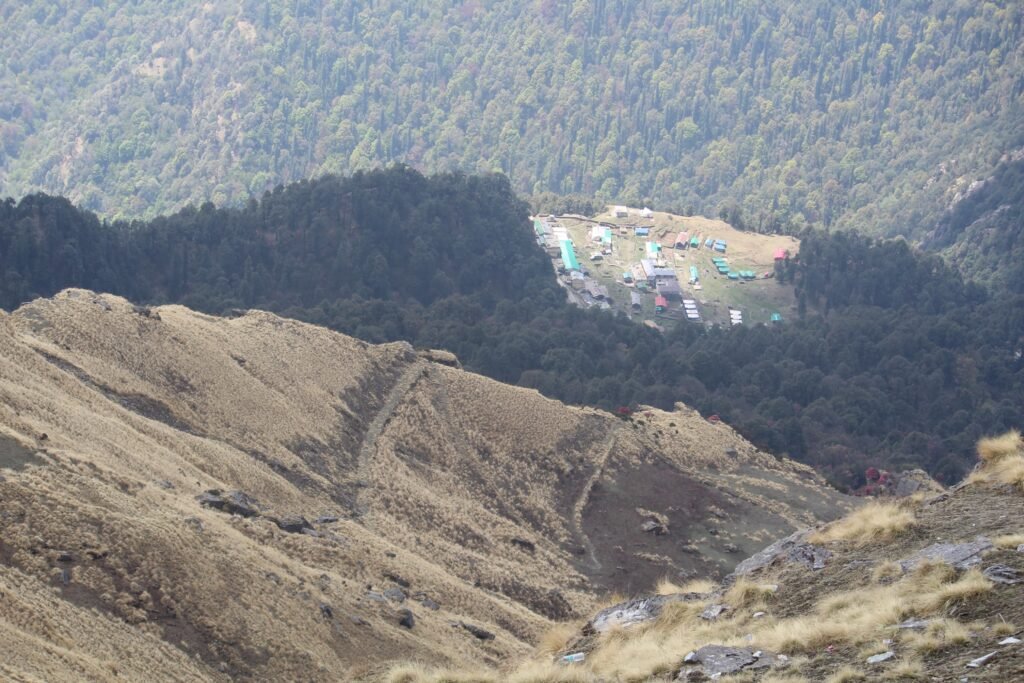
Table of Contents
Introduction to Chandrashila Trek

Chandrashila, meaning “Moon Rock,” is a revered summit with significant cultural and spiritual importance, located in the Indian state of Uttarakhand. This majestic peak rises to an impressive height of approximately 3,690 metres (12,143 feet) above sea level, securing its status as one of the prominent trekking destinations in the region. Nestled within the Garhwal Himalayas, the Chandrashila trek offers an unforgettable experience while providing breathtaking views of the surrounding mountain ranges, including Nanda Devi and Trishul.

Geographically, Chandrashila is situated just above the iconic Tungnath Temple, which is one of the highest Shiva temples in the world. The proximity of the two makes the Chandrashila trek an essential pilgrimage for devotees and adventure enthusiasts alike. Pilgrims often make their way to Tungnath, and from there, embark on a well-marked trekking path that leads up to Chandrashila. This trek is relatively accessible, attracting both seasoned trekkers and those seeking a spiritual journey amidst stunning natural landscapes.
The significance of Chandrashila extends beyond its physical allure. It holds deep religious connotations, as it is believed to be the location where Lord Rama meditated after defeating the demon king Ravana in the epic Ramayana. Aside from its importance to believers, the region is known for unique flora and fauna and offers a diverse hiking experience. As trekkers ascend to the summit, they encounter varying temperatures and weather conditions, making it essential to prepare adequately for any changes. Understanding Chandrashila’s climatic patterns, such as the variation in temperature and weather, can enhance the overall trekking experience.
In essence, the Chandrashila trek not only serves as an adventure into the heights of the Himalayas but also provides a spiritual and cultural voyage, making it a treasured destination for many.
The Journey to the Summit

The trek to Chandrashila begins at the famous Tungnath Temple, one of the highest Shiva temples in the world, situated at an altitude of approximately 3,680 meters. The initial ascent from the temple involves a well-defined path leading through lush green landscapes filled with deodar and rhododendron trees. As trekkers embark on the Chopta Chandrashila trek, they are immediately enveloped by the serenity of the Himalayan flora and fauna, making it a truly captivating experience.
The trekking route stretches roughly 1.5 kilometers from Tungnath Temple to the summit of Chandrashila. Although it may seem short in distance, the steep ascent can be challenging, particularly for novice trekkers. The trek is classified as moderate to difficult, primarily due to the altitude and the sometimes rugged terrain. Trekkers should be prepared for varying conditions as they gain elevation. The Chandrashila height reaches an impressive 4,000 meters, which can lead to altitude sickness for those unacclimatized. Therefore, gradual acclimatization is advised while ensuring hydration and nutrition are adequately maintained during the journey.

Chandrashila temperature and overall Chandrashila weather conditions before embarking on the trek.
For those planning to undertake this trek, it is advisable to start early in the morning to take advantage of clear skies and cooler temperatures. Trekking poles, sturdy hiking shoes, and warm clothing can enhance the trekking experience. With preparation, the journey to Chandrashila proves to be an unforgettable adventure that culminates in panoramic views and a profound sense of accomplishment.
Breathtaking Views from Chandrashila

The Chandrashila trek culminates at a remarkable elevation, emboldening adventurers with its panoramic vistas that are truly awe-inspiring. The summit, standing at approximately 4,000 meters (13,123 feet), offers an unmatched view of the majestic Himalayan range, making it a coveted destination for trekkers and nature enthusiasts alike. Upon reaching the top, one is treated to a breathtaking spectacle where numerous snow-capped peaks stretch across the horizon, creating an unparalleled scenic backdrop.
Among the notable peaks visible from Chandrashila is Nanda Devi, which is the highest mountain located entirely within India. Its imposing presence dominates the landscape, inspiring a sense of tranquility and wonder. Nearby, the Trisul mountain trio, known for its iconic pyramid-shaped summit, further enhances the breathtaking views and binds trekkers in a spell of admiration.

Kedar Peak, another highlight, reveals its rugged grandeur, while the glistening slopes of Bandarpunch and the towering Chaukhamba create a dramatic interplay of light and shadow at various times of the day. The visual delight of these peaks is exacerbated by the ever-changing weather conditions at Chandrashila, where the temperature and climate can shift rapidly, bringing forth a new mood to the landscape every hour. Whether shrouded in mist or basked in sunlight, the views remain incredibly captivating.
Moreover, the emotional impact of standing atop Chandrashila cannot be overstated. The sense of accomplishment after the trek combines with the stunning horizon, delivering an experience that lingers long after the descent. Each glance towards the snow-laden peaks becomes a cherished memory, reinforcing the allure of the Chopta Chandrashila trek for those who seek both adventure and natural splendor.
Cultural and Spiritual Significance

Chandrashila holds a prominent place in Hindu spirituality, standing as both a pilgrimage site and a cultural landmark within the Greater Himalayas. The summit is intrinsically linked to the revered Tungnath Temple, which is among the Panch Kedar temples dedicated to Lord Shiva. According to local mythology, it is believed that this sacred site is where Lord Rama performed penance after defeating Ravana, thereby establishing an eternal spiritual connection for devotees who embark on the Chandrashila trek. The significance of this summit is amplified by its breathtaking height of 4,000 meters, which provides an ideal setting for introspection and divine communion.
Every year, thousands of pilgrims undertake the chopta Chandrashila trek during auspicious months to seek blessings, participate in rituals, and pay homage at the Tungnath Temple. The trek itself is viewed as a metaphorical journey towards enlightenment, symbolizing the ascent from earthly struggles to spiritual heights. Visitors often engage in various communal activities, such as singing hymns and participating in group prayers, which foster a sense of unity and shared purpose among those who undertake this pilgrimage.
The cultural tapestry of the region is further enriched by the numerous festivals celebrated throughout the year. Among the most significant is the Maha Shivaratri festival, where devotees flock to Chandrashila to participate in elaborate rituals and to rejoice in the divine. The enchanting weather of Chandrashila, characterized by crisp air and a tranquil atmosphere, enhances the reverence felt during such events, making them even more memorable. The annual influx of pilgrims underscores the importance of Chandrashila, not just as a natural wonder but also as a vital thread woven into the spiritual and cultural heritage of the area. In conclusion, the mingling of nature and devotion at Chandrashila creates a unique environment that continues to inspire both individual and collective spiritual journeys.





Leave a Reply